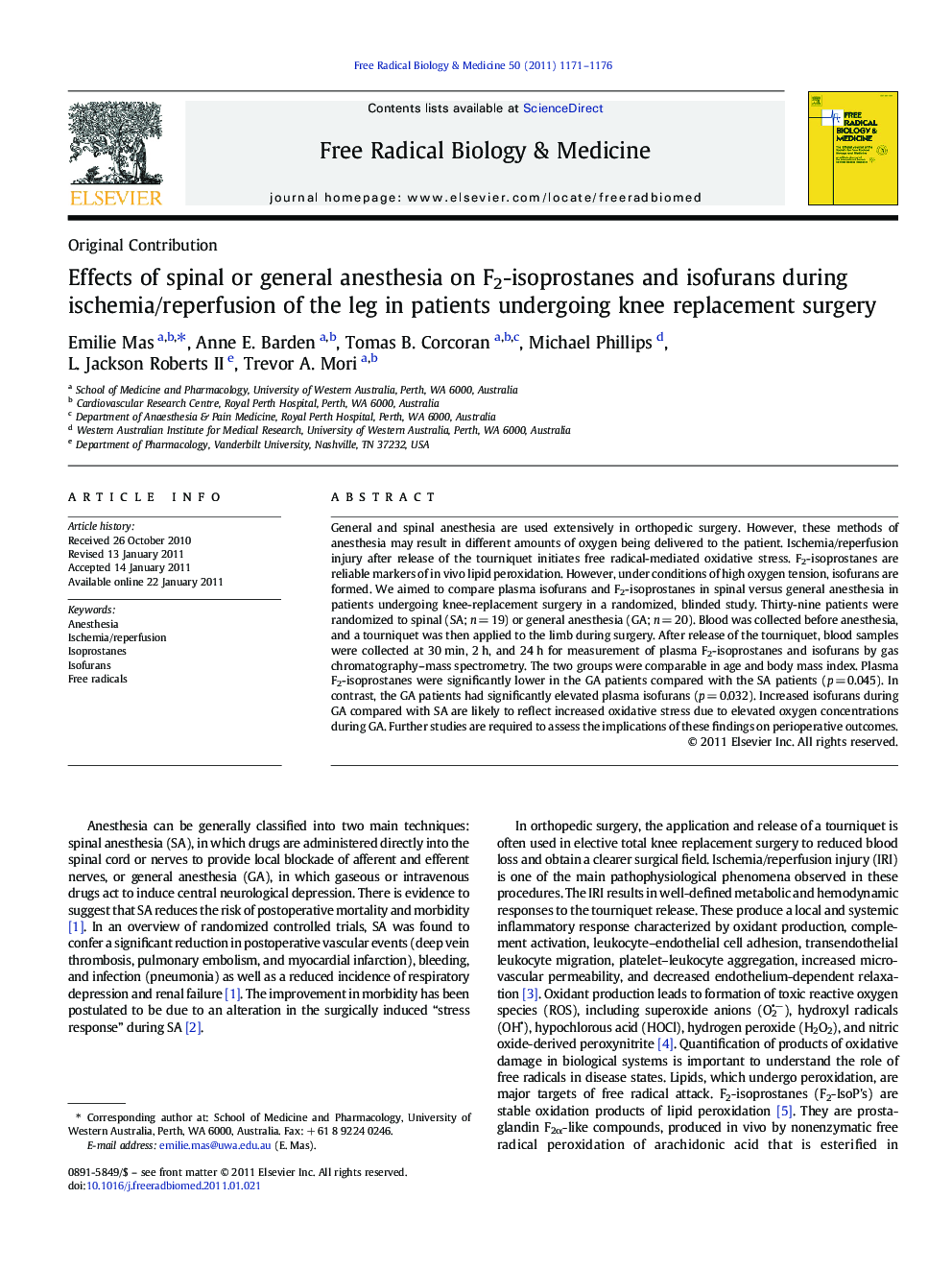| Article ID | Journal | Published Year | Pages | File Type |
|---|---|---|---|---|
| 10738439 | Free Radical Biology and Medicine | 2011 | 6 Pages |
Abstract
General and spinal anesthesia are used extensively in orthopedic surgery. However, these methods of anesthesia may result in different amounts of oxygen being delivered to the patient. Ischemia/reperfusion injury after release of the tourniquet initiates free radical-mediated oxidative stress. F2-isoprostanes are reliable markers of in vivo lipid peroxidation. However, under conditions of high oxygen tension, isofurans are formed. We aimed to compare plasma isofurans and F2-isoprostanes in spinal versus general anesthesia in patients undergoing knee-replacement surgery in a randomized, blinded study. Thirty-nine patients were randomized to spinal (SA; n = 19) or general anesthesia (GA; n = 20). Blood was collected before anesthesia, and a tourniquet was then applied to the limb during surgery. After release of the tourniquet, blood samples were collected at 30 min, 2 h, and 24 h for measurement of plasma F2-isoprostanes and isofurans by gas chromatography-mass spectrometry. The two groups were comparable in age and body mass index. Plasma F2-isoprostanes were significantly lower in the GA patients compared with the SA patients (p = 0.045). In contrast, the GA patients had significantly elevated plasma isofurans (p = 0.032). Increased isofurans during GA compared with SA are likely to reflect increased oxidative stress due to elevated oxygen concentrations during GA. Further studies are required to assess the implications of these findings on perioperative outcomes.
Related Topics
Life Sciences
Biochemistry, Genetics and Molecular Biology
Ageing
Authors
Emilie Mas, Anne E. Barden, Tomas B. Corcoran, Michael Phillips, L. Jackson II, Trevor A. Mori,
